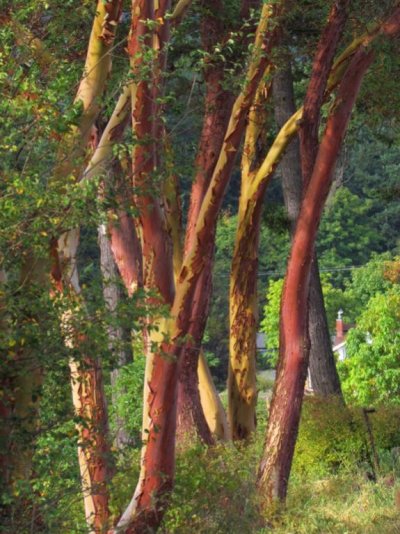What has been happening to the Madrona is interesting.Marin said:...arbutus which I understand are in some danger environmentally along the coast.
Around 2006 it was believed the West Coast Madrona was under siege and very much threatened. By what, they had no idea but were leaning towards Abiotic stresses brought on by;
Urbanization; including reduced growing space, vehicular and marine traffic
Pollutants
Climate change
Possible suppression of wildfires
Root disturbance and damage
Competition for resources
Shading and drought stress
It was first brought to my attention 6 or 7 years ago by a friend in Secret Cove who had several on their property, was concerned and knew my daughter in-law was a Horticulturist by degree. She actually specializes in BC indigenous and invasive species.
She was aware of the issue and told me many studies were done and many papers written with little or no conclusions, other than the Madrona is host to large numbers of fungi and insect species so...so...
Fast forward to now; she and my friend are cautiously reporting that the Madrona seems to be waking up and revitalizing on its own.
DIL reports, there are evergreens on our coast, some Cedars in particular, that do actually hibernate, sometimes for many years, when stressed. The thought now is, because the Madrona is also an evergreen it may well have been dozing off also.
The jury is still out and the Madronas stressed cousin in Hawaii, the Rainbow Eucalyptus, is being looked at similarly.
I bet some of Murray's friends in Kitimat, will have more knowledge than the degrees on this.
Last edited:


